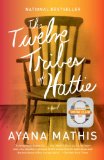Summary | Excerpt | Reading Guide | Reviews | Beyond the Book | Read-Alikes | Genres & Themes | Author Bio

This article relates to The Twelve Tribes of Hattie
The Great Migration describes a large-scale movement of African-Americans out of the South between 1910 and 1970. Hattie, moving from Georgia to Philadelphia, would have no doubt agreed with Pulitzer Prize-winner Isabel Wilkerson's assessment of the Great Migration as "six million black Southerners moving out of the terror of Jim Crow to an uncertain existence in the North and Midwest."
African Americans began to leave the South shortly after the Emancipation Proclamation was signed, but in small numbers. By the turn of the 20th century, though, segregation, lynchings, and few employment opportunities in the South, forced many blacks to seek their fortunes elsewhere. So many left during this period, in fact, that African-American population growth froze for a period in Southern states. Some areas in the Deep South even experienced African-American population decline across the 'black belt,' where the cotton crop had been most prominent. In 1910, African-Americans made up half the population in South Carolina and Mississippi and more than 40% in Georgia, Alabama, and Louisiana. By 1970, only Mississippi had an African-American population that totaled over 30% of the entire population.
 African Americans moved out of the South to urban areas in the North and West, primarily Detroit, Chicago, and New York City. They moved as individuals, or like Hattie, with a few family members. There was no government assistance to help with the moves, but often industries, like railroads, meatpacking, and stockyards would recruit people. This sometimes led to racial tensions with recent European immigrants, particularly the Irish, who had been recruited for the same jobs and had to compete for the same housing.
African Americans moved out of the South to urban areas in the North and West, primarily Detroit, Chicago, and New York City. They moved as individuals, or like Hattie, with a few family members. There was no government assistance to help with the moves, but often industries, like railroads, meatpacking, and stockyards would recruit people. This sometimes led to racial tensions with recent European immigrants, particularly the Irish, who had been recruited for the same jobs and had to compete for the same housing.
By the end of the Great Migration in 1970, a community that had been tied to rural farms at the beginning of the 20th century was mainly comprised of urbanized, industrial workers with 80% of the total population living in cities. This migration transformed Northern cities. Chicago, for example, had a 2% African-American population before 1910, but by 1970 African Americans made up 33% of the city. However, by 1965 the migration had begun to slow. A small reverse migration began around this time, with some older African Americans returning to the South.
Picture from historycentral.com
Filed under People, Eras & Events
![]() This "beyond the book article" relates to The Twelve Tribes of Hattie. It originally ran in January 2013 and has been updated for the
October 2013 paperback edition.
Go to magazine.
This "beyond the book article" relates to The Twelve Tribes of Hattie. It originally ran in January 2013 and has been updated for the
October 2013 paperback edition.
Go to magazine.
Your guide toexceptional books
BookBrowse seeks out and recommends the best in contemporary fiction and nonfiction—books that not only engage and entertain but also deepen our understanding of ourselves and the world around us.